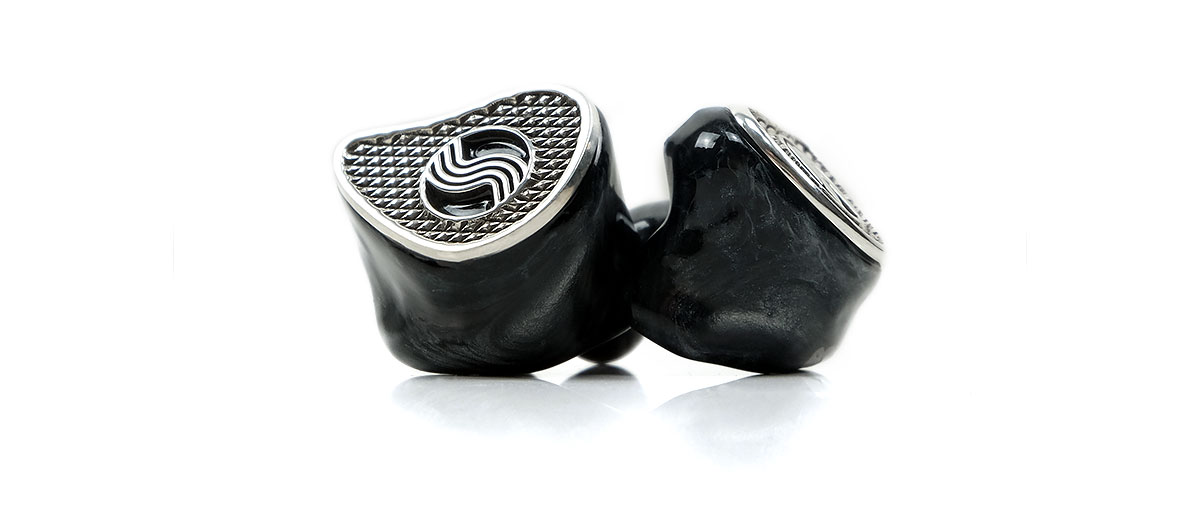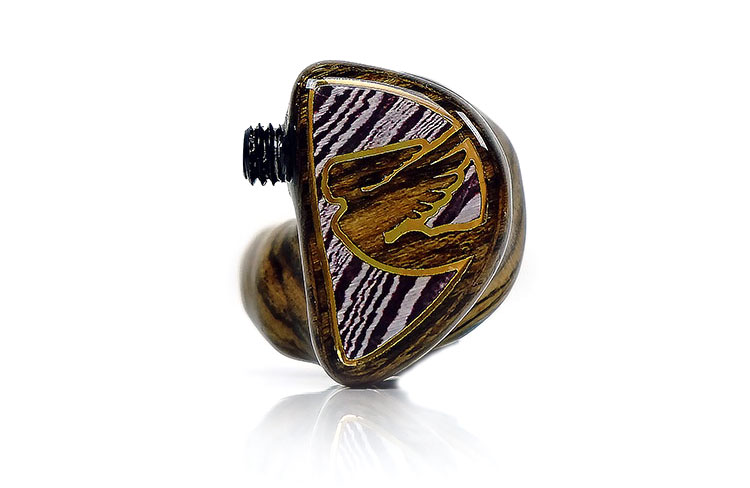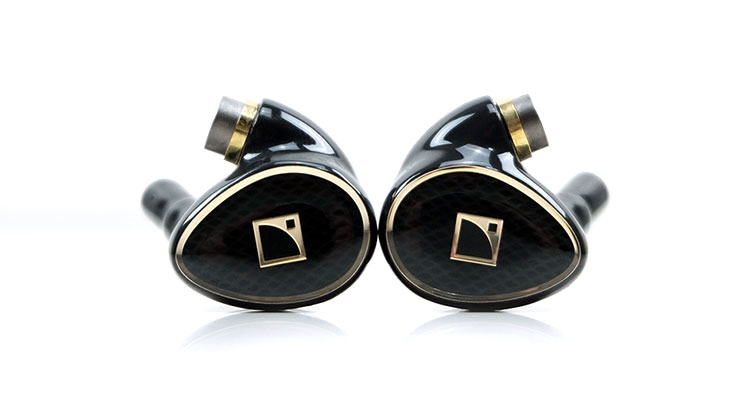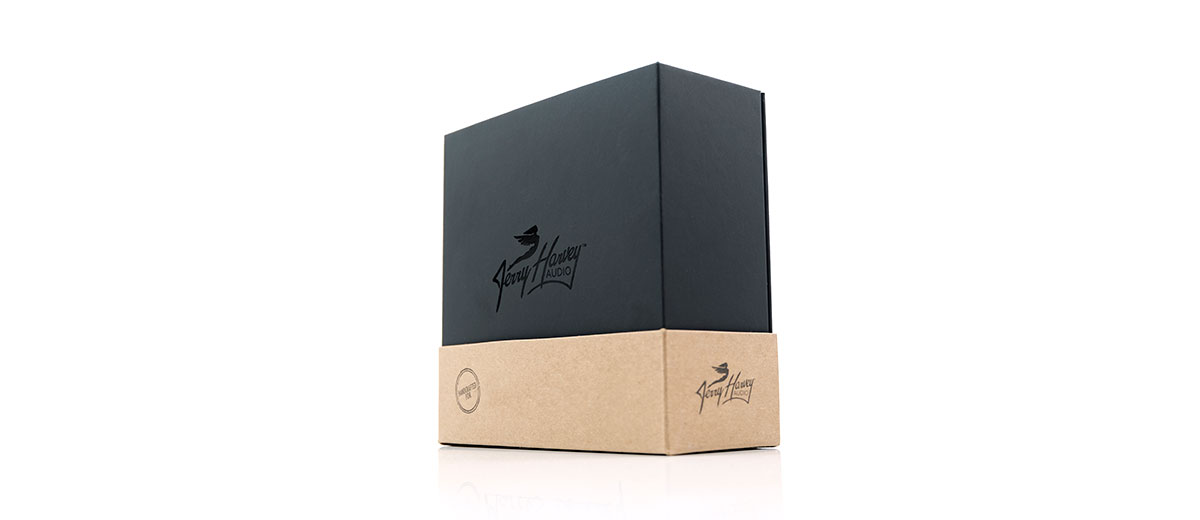Select Comparisons
JH Audio Layla
From $2199
Until Sharona, the Layla was JH Audio’s long-standing flagship BA monitor and our Top Gear CIEM award winner in 2018. You can read our full review of the Layla CIEM version here.
Technical
Like the Sharona, the Layla is also 100% BA driver monitor only the erstwhile flagship uses 12 drivers per side with a 3-way crossover as opposed to 16 with a true 4-Way Integrated Crossover (Passive).
On top of that, the Layla uses JH Audio’s older set of Knowles drivers for the Super tweeter configuration instead of the new RAU pack inside the Sharona meaning the performance beyond 12k should be roomier on the latest flagship model.
They do both still share a lot of similar implementation technologies. This includes using JH Audio’s customary Soundrive™ Technology mini quad driver packs though there are 3 inside the Layla as opposed to 4 inside the Sharona. Both customs take advantage of Freq|phase though for me the smaller size of the Sharona suggests its tubing implementation has been refined somewhat.
In terms of efficiency, there is not much to separate these two with the Layla rated at 20Ω and 117dB and the Sharona offering just a slightly lighter load at 16Ω and a shade less efficiency at 114dB SPL. Both are fairly easy to driver in-ear monitors.
Design
Two beautiful sample designs with the Bacote wood and gold trimming of the Layla offering the enhanced visual pop and the intricacies of the complex metal plate of the Sharona delivering more of a tactile premium plate vibe. One is warm and inviting and the other, aesthetically speaking, is low-profile and less conspicuous with its hyper-black shells.
Of course, being a custom you can design either how you want it, even use the Cobalt Signature Sharona design on the Layla if you prefer. You can also switch the connectors around with 7-pin or T2 on either creation. One thing to note, the picture above shows the older 4-pin design which is not available for Sharona. You can only get that one in 7-pin or T2 formats.
The recessed T2 port does reduce the size of the monitor but having said that, it feels like JH Audio has really cut down on the sizing of their customs in general over the years. The Layla is huge compared to the Sharona, with a thicker nozzle, more ear canal pressure, and sticks out much further when set in your ear.
The one benefit of ‘huge’ though is the level of isolation which is slightly better on my Layla sample compared to the more relaxed fitting of the Sharona cut. I suspect if you are on the stage for a few hours and monitoring a stage performance from the deck the comfier Sharona design is going to be a superior fit.
One thing to note, a T2 connection does mean no bass module so if you are partial to tweaking the bass you should consider going 4-pin or 7-pin to allow you to use a bass module attached stock cable.
Performance
The Layla has more of a V-shape to it with a heavier emphasis on the lows and the highs around 7-8k whereas the Sharona is more balanced sounding to me with a stronger midrange focus.
And that’s the first difference that leaps out when listening to these two in terms of just how much more presence and space around the mids you get with the Sharona. There is more accounting for pinna gain in the 1-4k region which gives vocals a more forward imaging quality whereas with the Layla it is dipped from 2-4k pushing the imaging further back.
The Layla compensates with more harmonic contrast from a stronger 8k emphasis and then underpins it with some excellent bass. Midrange notes have a bit more bite and contrast but they also sound a little thinner and not quite as smooth and refined as the creamy Sharona midrange timbre.
The bass module will allow some serious density and bass presence on the Layla at its maximum setting. The T2 version of the Sharona does not have that but side by side it feels equivalent to 12 noon to 2 pm on the bass module dial.
Now I mentioned balanced in describing the Sharona presentation. It’s an excellent bass response but compared to the Layla I sense a bit more of a cut in the FR elevation around 200Hz to 1k. That means a little less bloom and a bit more bass to mids separation. I suspect a monitoring pro will appreciate that and it does help the mids breathe for regular listening also.
The other big difference is the staging quality. Both are relatively roomy but Sharona’s mids to highs are more holographic and refined sounding with excellent headroom. The width is just a little stronger also.
JH Audio Jolene
From $1999
The Jolene is the company’s debut hybrid monitor and walked away with our Top Gear CIEM Award for 2021. You can read our full review of the Jolene from last year here.
Technical
A completely different internal configuration here with the hybrid Jolene using a double DD for the lows and low-mids and 8 BA into 2 Soundrive™ Technology mini quad driver packs for the high-mid BA, quad ultra-high BA. The Jolene does not use the new RAU super tweeter technology.
For the lows up to 400Hz, Jolene uses a pair of 9.2mm dynamic diaphragms and for the mids, you get two smaller manifold 4.9mm dynamic drivers with D.O.M.E enclosures and a natural band pass roll-off at 4Khz.
The Sharona is an all-BA 16 driver split into 4 quad packs for the lows, low-mids, high-mids, highs, and ultra-highs. Both monitors use a true integrated 4-way crossover with Freq|phase tubing as well as ‘asc’ or Acoustic Sound Chamber recessed tubing system for moisture control and keeping your bores clean.
Ratings-wise, the Jolene is comparative at 10Ω and 114dB SPL compared to the Sharona which is rated at 16Ω and also at 114dB SPL. Neither are challenging monitors to drive but in truth, they might not seem as sensitive as they should on paper with the Jolene requiring a bit more juice than the Sharona to volume match on SE outputs from the likes of the LP P6 Pro.
Design
The hyper-black shell and chrome Sharona plate is an excellent design but I have to doff my cap to the Crimson & Clover signature series finish from the Jolene sample. That brass plate and warm liquid blends of wine and tan from the CNC machined live edge wood and resin block are just world-class.
This is a custom monitor and as such you are not fixed with any one design. You can get the Sharona with the Crimson & Clover finish at $400 per side compared to $275 with the Hyper Black alone. With the Sharona plates, it will cost the same $400 per side. If it is your only custom it might be worth it though.
This particular Jolene sample is also finished with the 7-pin connectors as opposed to the stealthier and frankly less fussy T2 connection. After some time using the T2 I have to admit that it is a much simpler and easier to use connector system. You do, however, lose the bass module if you go T2.
The T2 connection is also a factor in the reduced weight and size of the Sharona shell which is a lot smaller than the Jolene. I am presuming here that the dynamic drivers and their subsequent tubing need a larger shell to get it just right for Freq|phase. Still, the Sharona sample here is a much lower profile build with a shorter nozzle and a more relaxed fitting.
That relaxed cut means the fitting is more comfortable, but there is slightly less isolation than the Jolene sample we have here, whose nozzle is thicker and longer.
Performance
Some of the Layla observations apply also for the Jolene comparison with the exception of the very obvious switch up to dynamic drivers for the lows and low-mids and a little more upper-mids and lower treble contrast.
The Jolene’s power and bass texture are definitely weightier and deeper sounding despite Sharona’s excellent BA woofer tuning. You can just hear the density and natural decay below 100Hz and as result, the Jolene can hit harder, especially with the maximum bass module setting.
The Sharona bass response is the more agile of the two and does not overshadow the mids as much and here is where there is another significant difference between these two. The Jolene takes the Layla path a bit more with lower-mids from 500Hz to 1k getting more of a focus from that second smaller dynamic driver but otherwise more neutral from 2-4k.
The pinna gain on the Sharona is more emphasized around 2-4k with a smaller bump for balance around 1k. It is a stronger vocal performer bringing them a bit more to the fore and stretching the imaging experience to something more holographic sounding.
The Jolene has an excellent bass fundamental and a nice level of contrast on instrumental timbre but is not quite as liquid and smooth sounding as the Sharona through the mids and highs. The Sharona is airy on the highs also with its bump closer to 10k.
That allows JH Audio to push those upper mids further up on the Sharona without catching any upper harmonic nasties whereas Jolene reduces the air a little and the upper mids to compensate for a bit of 7-8k sparkle. It is a comparatively reduced headroom with depth favoring height whereas the Sharona is more spacious and airier through the mids and highs.
JH Audio Contour XO
From $1949 (Custom version) and €1,350.00 universal version (L-Acoustics)
The Contour XO is a collaborative 10 driver monitor project with L-Acoustics and comes in both universal and custom formats. Launched last year you can read our full review of the Contour XO here.
Technical
Both monitors use an all-BA driver configuration with the Contour XO stuffed with 10 drivers per side and the Sharona using 16 per side. Naturally, a different implementation with the Contour XO using Soundrive™ Technology quad lows, a dual mid, and a quad high via a 3-way crossover.
The Sharona ups the gears with 4 Soundrive™ Technology quad packs and the new Knowles RAU super tweeters for the lows, low-mids, high-mids, highs, and ultra-highs with a true 4-way integrated crossover.
Both monitors use Freq|phase control with variable tube lengths internal as well as asc or Acoustic Sound Chamber recessed tubing system for moisture control and keeping your bores clean.
Ratings-wise, the Contour XO is probably the lightest of the 3 compared monitors in terms of load at just 8Ω and 116dB SPL compared to Sharona’s 20Ω and 114dB SPL benchmark. In our real-world testing, there is very little difference in their volumes and both pose no issues in being driven well from SE ports from decent DAPs.
Design
The Contour XO version we have here is the universal version but note, that there is only one possible design if you decide to get the custom variant due to the conditions set with L-Acoustics who are the development partners.
Mind you, the XO finish is a beautiful carbon-fiber weave plate and piano black shell design complete with gold trimmings on the fenders and surrounding the 7-pin connectors. It is also substantially cheaper with no additional fees for the design.
You can only get the Xo with 7-pin connector systems by the way. There is no T2 or 4-pin option whereas the Sharona is completely customizable for materials and offers either the T2 or the 7-pin connection system so there is a bit more flexibility here for the new flagship.
Of course, going 7-pin means you get access to the bass module-equipped stock cables which for some might be an important requirement. Sadly, I cannot test the difference between those two as the Sharona here is a T2 connector system.
Being a universal there are some pros and cons. The XO universal is much smaller and feels lighter in your ear compared to the Sharona. You can also fine-tune the sound and level of isolation with a bit of tip rolling.
However, the Sharona is a perfect fit and isolates a little bit better though I would advise asking if you can have a longer nozzle if you want the very best in isolation as this relaxed cut leaks a bit more than the longer nozzle of our Jolene sample.
Performance
A complete contrast to the Sharona. The Contour XO is a lively, clean-sounding monitor with a timbre that leans north of neutral in terms of odd-harmonic bias owing to a heavily amplified 5-8k region.
The Sharona is tuned for an easier longer listening session with a much smoother, more balanced presentation and a tonal balance that tilts more to even-harmonic euphony. The attack is more liquid, the decay slightly longer. Notes are a little more rounded and warmer in the instrumental timbre also.
The low-end is more variable in terms of a 1-2-1 comparison given this is a T2 Sharona with no bass module but a side by side would suggest the Contour XO equivalent setting is around 3 pm. Any lower and the Sharona has the fuller meatier bass performance.
Mids are more neutral on the Contour XO though not as neutral or dipped as the Layla. The high contrast timbral coloration and shorter decay on the drivers keep it very dynamic through the mids with plenty of bite on percussion hits.
The Sharona mids are softer, mellower, and with less contrast. However, the imaging has a more pronounced 2-4k push that gives it a bit more of a forward presence to vocals without the treble bleeding into it in an attempt to dig it out.
The highs are also a bit of a contrast. The Sharona isn’t as bright but it is actually airier and wider in its staging with better headroom. The Contour XO has a much more pronounced lower to the mid-treble shelf but slightly more upper treble roll-off so more sparkle but less airy.
Our Verdict
The JH Audio Sharona is a custom monitor designed for pleasurable listening. It delivers a beautifully smooth and detailed performance with a tremendous sense of space to suck you right into a non-fatiguing but engaging sound signature.
Importantly, it is quite different from the current lineup such as the Layla, Contour XO, and Jolene. Not just in its tuning which, for me, has one of the strongest midrange performances out of these compared monitors. But also, in the design and build which is both smaller and much more relaxed in its fitting.
Both the tuning and the form factor are really tailor-made to stay in your ear for ages without causing any physical or listening discomfort. That should be right up any musician’s alley for concerts and performance sessions that could go on for hours but don’t discount the vocal-loving audiophile either. It has the chops for both audiences.
JH Audio Sharona Specifications
- 16-Driver BA Configuration with True 4-Way Integrated Crossover (Passive)
- Quad Low BA / 10 Hz – 250 Hz
- Quad Low-Mid BA / 250 Hz – 4 kHz
- Quad High-Mid BA / 4 kHz – 12 kHz
- All-New Proprietary RAU Quad Supertweeter BA / 12 kHz – 25 kHz
- Litz Wire T2 Cable & Connector System (Non-Attenuated)
- Freq|phase Time & Phase Waveguide
- Acoustic Sound Chamber
- Frequency Response: 10Hz – 25 kHz
- Input Sensitivity: 114dB @ 1mW
- Impedance: 16 Ohms
- Noise Isolation: -26 dB





